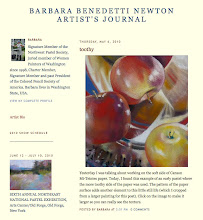Two months ago I completed a painting titled "Long Time Passing" and mentioned at that time that I'd share the backstory in the future. The future is now so here is the
link to that post as well as
a link to the process and below is the backstory.
My husband and I recently purchased lake property. I painted this scene of it when the previous owner first allowed us to walk the land. At that time, the sale was uncertain and turned out to be months away. Overgrown and wild, we looked at it for years as we drove by; to finally own it is a dream come true. I want to make the property and the building of a house and studio there my priority even though that will mean painting less or not at all for awhile.
This new project comes at a time when I was questioning why I paint what I do. I lost interest in painting scenes from reference photos so I threw all my photos out. I began painting what I called "mind's-eye" scenes. They might be from my memory though I don't remember having been in these places. Maybe they are from my heart?
As part of my break from painting, I rarely log into Facebook these days and I cancelled most of my blog subscriptions because these are sources of painting motivation for me.
Two subscriptions I didn't want to give up are
Tom Weinkle and
Loriann Signori because these artists provide thought provoking words of wisdom. I may not be
painting but I am certainly
thinking about painting. Specifically what/how/why I will paint in the future. I am looking inward.
















